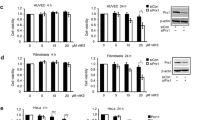Abstract
In mammals, thioredoxin reductase 1 (Trr1) is of potential importance in defense against oxidative stress and regulation of redox homeostasis. Nevertheless, overexpression of this selenoprotein Trr1 is also manifested in several types of malignant cancers, leading to hypothesis that Trr1 might be a molecular candidate for anticancer drug treatment. An anthracycline antibiotic, doxorubicin (DOX), has been extensively applied in the chemotherapy of solid tumor tissues including colon. Cytotoxification of DOX is targeting on damage to DNA molecules via possible generation of reactive oxygen species (ROS) with consequent inhibition of macromolecule biosynthesis. At present work focusing on specific Trr1 knockdown using short hairpin RNA (shRNA) based viral vector, the important role of Trr1 on DOX resistance in human colon cancer RKO cell was deliberately investigated. Intriguingly, our finding presented that the stable Trr1 shRNA knockdown had higher sensitivity to DOX relative to the wild type. With respect to this point, accumulated intracellular ROS was notably stimulated in the Trr1 shRNA defect rather than the wild type. Apparently, it was also direct linkage between ROS level and extent of phosphorylated histone “gamma-H2AX”, indicative of DNA damage. Strikingly, our important observation revealed that in presence of DOX Trr1 deficiency probably accelerated double strand breaks to DNA, provided evidence as neutral comet assay. Additionally, our data demonstrated that DOX-induced apoptosis was also correlated with increment of oxygen radicals damage to DNA. Taken together, it was worthy to conclude that specific reduction of Trr1 expression via shRNA based interference might be a considerable molecular approach to improve effectiveness of DOX-mediated killing in treatment of human colon cancer cells, through stimulation of oxidative insult. This implied that Trr1 might be a plausible target in cancer therapy.
Similar content being viewed by others
References
Gewirtz, D. A. A critical evaluation of the mechanisms of action proposed for the antitumor effects of the anthracycline antibiotics adriamycin and daunorubicin. Biochem Pharmacol 57:727–741 (1999).
Horenstein, M. S., Heide, R. S. V. & L’Ecuyer, T. J. Molecular basis of anthracycline-induced cardiotoxicity and its prevention. Mol Genet Metab 71:436–444 (2000).
Momparler, R. L., Karon, M., Siegel, S. E., & Avila, F. Effect of adriamcin on DNA, RNA and protein synthesis in cell free systems and intact cells. Cancer Res 36:2891–2895 (1976).
Bachur, N. R., Gordon, S. L. & Gee, M. V. Anthracycline antibiotic augmentation of microsomal electron transport and free radical formation. Mol Pharmacol 13:901–910 (1977).
Sun, Q. -A. et al. Redox regulation of cell signaling by selenocysteine in mammalian thioredoxin reductases. J Biol Chem 274:24522–24530 (1999).
Zhong, L., Arnér, E. S. J. & Holmgren, A. Structure and mechanism of mammalian thioredoxin reductase: The active site is a redox-active selenolthiol/selenenylsulfide formed from the conserved cysteine-selenocysteine sequence. PNAS 97:5854–5859 (2000).
Arnér, E. S. & Holmgren, A. Physiological functions of thioredoxin and thioredoxin reductase. Eur J Biochem 267:6102–6109 (2000).
Biaglow, J. E. & Miller, R. A. The thioredoxin reductase/ thioredoxin system: novel redox targets for cancer therapy. Cancer Biol Ther 4:6–13 (2005).
Smart, D. K. et al. Thioredoxin reductase as a potential molecular target for anticancer agents that induce oxidative stress. Cancer Res 64:6716–6724 (2004).
Kirkpatrick, D. L. et al. Mechanisms of inhibition of thioredoxin growth factor system by antitumor 2-imidazolyl disulfides. Biochem Pharmacol 55:987–994 (1998).
Rundlöf, A. K. & Arnér, E. S. Regulation of the mam-malian selenoprotein thioredoxin reductase 1 in relation to cellular phenotype, growth, and signaling event. Antioxid Redox Signal 6:41–52 (2004).
Arnér, E. S. & Holmgren, A. The thioredoxin system in cancer. Semin Cancer Biol 16:420–426 (2006).
Yoo, M. -H. et al. Thioredoxin reductase 1 deficiency reverses tumor phenotype and tumorigenicity of lung carcinoma cells. J Biol Chem 281:13005–13008 (2006).
Choi, J. H. et al. Over-expression of mitochondrial thioredoxin reductase and peroxiredoxin III in hepatocellular carcinomas. Anticancer Res 22:3331–3335 (2002).
Taneja, N. et al. Histone H2AX phosphorylation as a predictor of radiosensitivity and target for radiotherapy. J Biol Chem 279:2273–2280 (2004).
Watters, G. P., Smart, D. J., Harvey, J. S. & Austin, C. A. H2AX phosphorylation as a genotoxicity endpoint. Mutat Res 679:50–58 (2009).
Wojewodzka, M., Buraczewska, I. & Kruszewski, M. A modified neutral comet assay: elimination of lysis at high temperature and validation of the assay with anti-single-stranded DNA antibody. Mutat Res 518:9–20 (2002).
Eriksson, S. E., Prast-Nielsen, S., Flaberg, E., Szekely, L. & Arnér, E. S. J. High levels of thioredoxin reductase 1 modulate drug-specific cytotoxic efficacy. Free Radical Bio Med 47:1661–1671 (2009).
Jeggo, P. A. & Löbrich, M. DNA double-strand breaks: their cellular and clinical impact? Oncogene 26:7717–7719 (2007).
Fairbairn, D. W. & O’Neill, K. L. The neutral comet assay is sufficient to identify an apoptotic ‘window’ by visual inspection. Apoptosis 1:91–94 (1996).
Author information
Authors and Affiliations
Corresponding author
Rights and permissions
About this article
Cite this article
Koedrith, P., Seo, Y.R. Induction of doxorubicin-mediated apoptosis via thioredoxin reductase 1 RNAi in human colon cancer cells. Mol. Cell. Toxicol. 7, 112–119 (2011). https://doi.org/10.1007/s13273-011-0015-z
Received:
Accepted:
Published:
Issue Date:
DOI: https://doi.org/10.1007/s13273-011-0015-z




